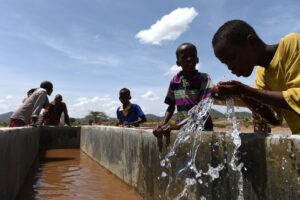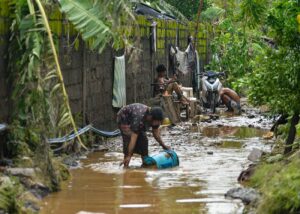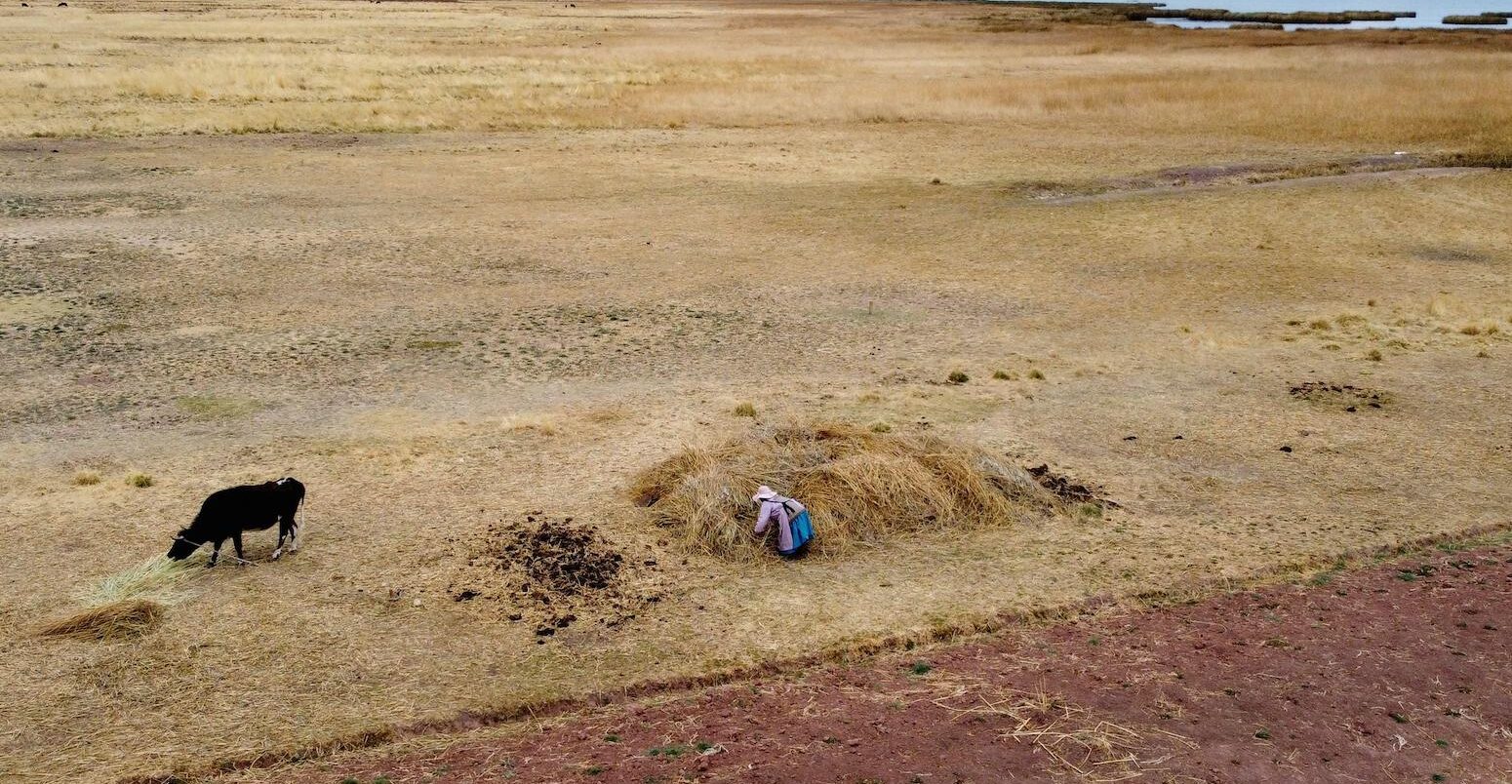
South American drought in 2022 partly driven by ‘triple-dip’ La Niña
Ayesha Tandon
02.16.23Ayesha Tandon
16.02.2023 | 12:58pmClimate change was not the main driver of the drought plaguing large parts of central South America late last year, according to a new “rapid attribution” study.
South America has been suffering through a prolonged dry spell for the past three years. Water levels in the Paraná River – the second-longest river in South America – have plummeted to their lowest level in nearly 80 years and Argentina is facing its worst drought in 60 years.
Meanwhile, the region has also experienced a series of unprecedented heatwaves. A rapid attribution study conducted by the World Weather Attribution service last year found that Argentina’s record-breaking heatwave in December 2022 was made 60 times more likely by climate change.
While climate change clearly influenced the extreme heat over Argentina, a new rapid attribution study finds that climate change did not make the low rainfall levels more likely.
Instead, the authors point to La Niña – a climatological event which increases the likelihood of high temperatures and lower rainfall in the region, and which has occurred for its third consecutive year.
The authors add that the intense heatwaves that have swept the region likely increased evapotranspiration levels, reducing the amount of moisture available in soils and worsening the impacts on crops.
La Niña
Countries across South America are suffering through the third year of a prolonged drought, which has forced many countries in the region to declare a state of emergency.
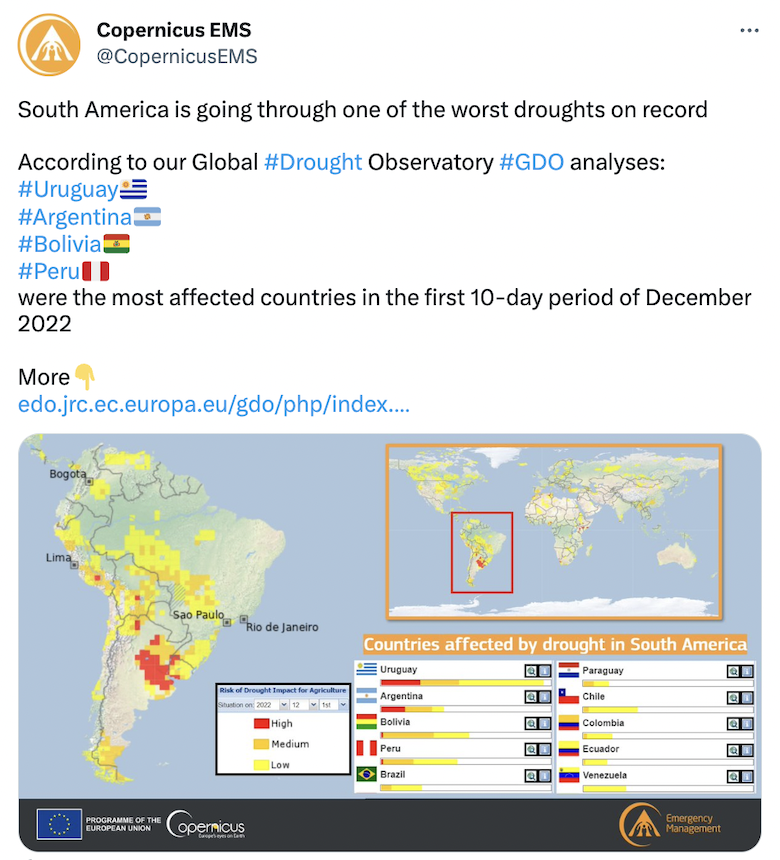
Argentina is currently experiencing its worst drought in 60 years. Dr Juan Rivera from Argentina’s National Scientific and Technical Research Council is a co-author on the new study. He told a press briefing that the past three years have seen the lowest accumulated precipitation in Argentina’s history.
The study finds that, in the last four months of 2022, the region received only 44% of the average precipitation – the lowest rainfall for that period in 35 years.
In October 2022, the drought put 3.5m hectares of crops and more than 18.5m cattle at risk in Argentina alone, according to the country’s National Drought Monitoring Board. Argentina is a “major player” in the global food market and produced 22m tonnes of wheat in the 2021-22 season. But in 2023, production is expected to be around half this level, driving economic losses of $10bn for soybean, wheat and corn producers and knocking a full two points of the country’s GDP this year.
Water levels in the Paraná River – the second-longest river in South America – have plummeted to their lowest level in nearly 80 years, impacting hydropower generation, river-borne food shipments and freshwater supplies for around 40 million people throughout Argentina, Brazil and Paraguay.
The government of Argentina declared a state of water emergency for the Paraná basin in July 2021. Meanwhile, the government of Uruguay declared an agricultural emergency in October 2022.
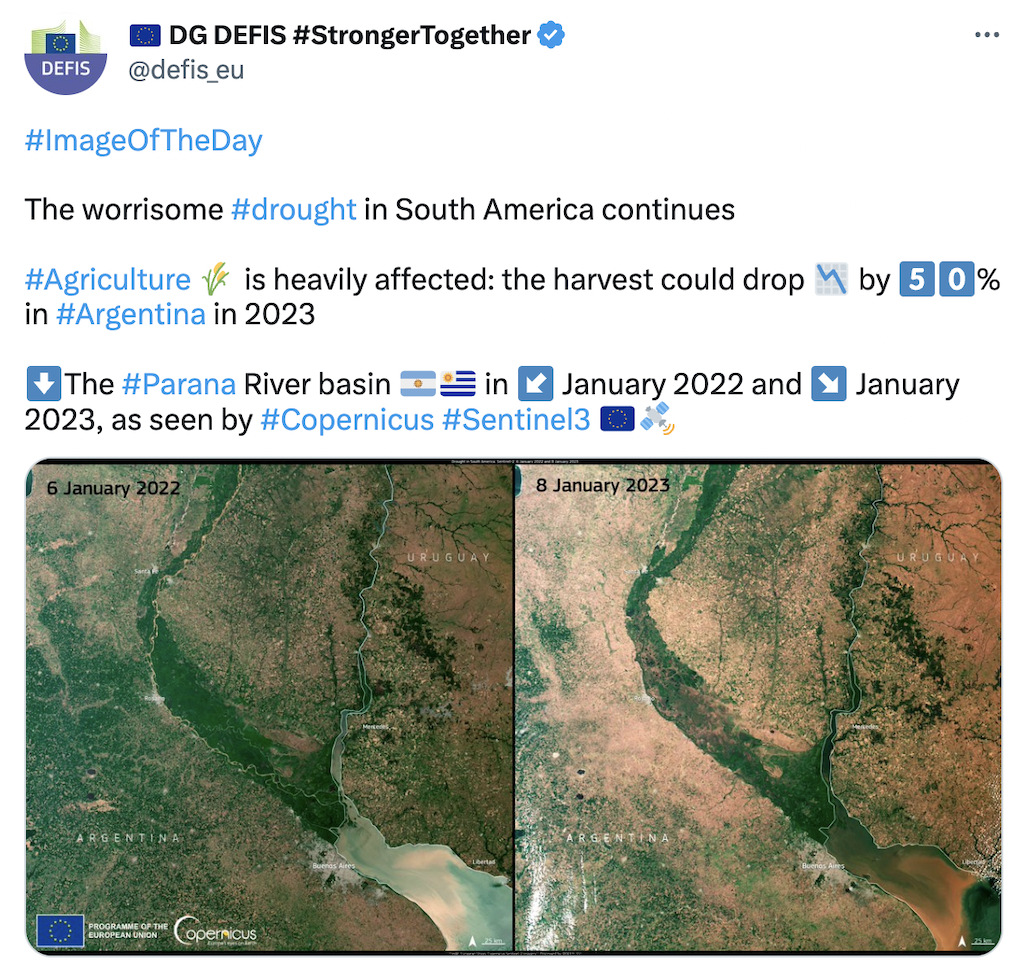
Experts are linking the dry conditions to the atmospheric and oceanic phenomenon “La Niña”. During this phenomenon, colder than normal ocean temperatures are seen in the eastern equatorial Pacific Ocean, causing knock-on impacts on temperature, rainfall levels and even cyclone activity around the world. One of these impacts is the reduction of rainfall across South America.
La Niña events normally occur every five years or so. But, since 2019, the planet has seen an unusual “triple dip” of three consecutive La Niña years, driving a prolonged period of low rainfall across South America.
Agricultural drought
While La Niña is a well-established driver of the prolonged drought across central South America, climate change can also impact rainfall levels. In this study, the authors assess whether human-induced climate change also contributed to the low rainfall.
The study focuses on a region encompassing southern Brazil, central and northern Argentina, Uruguay and southern Bolivia, over October-December 2022. This time period is the beginning of South America’s rainfall season and is important for determining crop health and productivity for the coming year, the authors note.
There are many ways of defining drought. For example, hydrological drought focuses on the amount of rainfall a region receives, while pluvial droughts focus on surface and groundwater flows. This study focuses on agricultural drought, which captures the response of rainfall on soil moisture conditions, and is the most relevant for crop health.
The maps below show the standardised precipitation index – a measure related to soil moisture – for October-December 2022, relative to the 1980-2010 average. Each map shows a different dataset. The study area is outlined in blue and the crosses indicate nine rainfall gauges in the region. Darker colours indicate more intense drought levels.
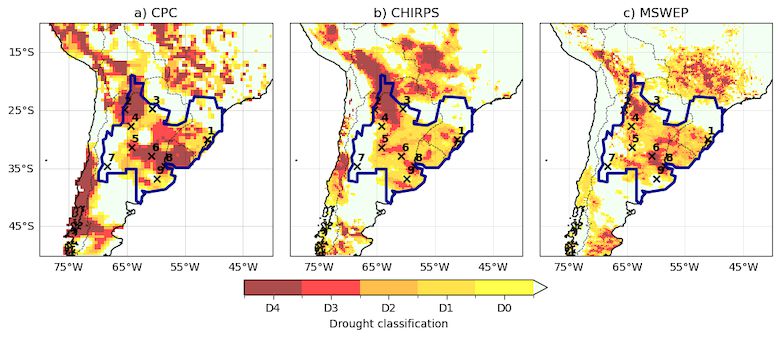
To put the heatwave into its historical context and determine how unlikely it was, the authors analysed a time series of observational rainfall data over a 40-year period. While they find a trend of reduced rainfall over the past 40 years, they note that this could be expected from natural variability in the region.
For the region as a whole, the October-December 2022 low rainfall event has a return period of 20 years, meaning it has a 5% chance of occurrence in any given year. Meanwhile, the event is less likely at the nine individual rainfall gauges, with return times of up to one every 50 years.
Attribution
Attribution is a fast-growing field of climate science that aims to identify the “fingerprint” of climate change on extreme weather events, such as heatwaves and droughts. To conduct attribution studies, scientists use models to compare the world as it is today to a “counterfactual” world without human-caused climate change. This study aims to distinguish the “signal” of climate change in central South American rainfall.
The models used in this study show a wetting trend across South America over the past 40 years – the opposite of the trend observed in most weather records. Dr Frederieke Otto – senior lecturer in climate science at the Grantham Institute for Climate Change and the Environment at Imperial College London and co-author of the study – tells Carbon Brief that this drying trend is “not strong” and is “mainly within natural variability”.
The authors conclude that “we cannot attribute the low rainfall to climate change”. However, they emphasise that while climate did not impact the rainfall signal, it could have impacted the drought in other ways.
(These findings are yet to be published in a peer-reviewed journal. However, the methods used in the analysis have been published in previous attribution studies.)
Most notably, a separate study conducted by the World Weather Attribution in December 2022 found that the heatwave in December 2022 in Argentina was made 60 times more likely due to climate change.
Otto told a press briefing that the intense heat can cause evapotranspiration to increase, which means that “less water is available to be taken up by soils”. This is likely to have worsened the agricultural drought, she says.
Meanwhile, the study suggests that Amazon deforestation could also be impacting South American rainfall. Prof Paola Arias – professor at Colombia’s Environmental School of the University of Antioquia and co-author on the study explained that atmospheric moisture from the southern Amazon is responsible for 20% of the rainfall that falls over South America. She added that deforestation reached record highs in 2022 – which could have contributed to the decrease in rainfall over South America.


